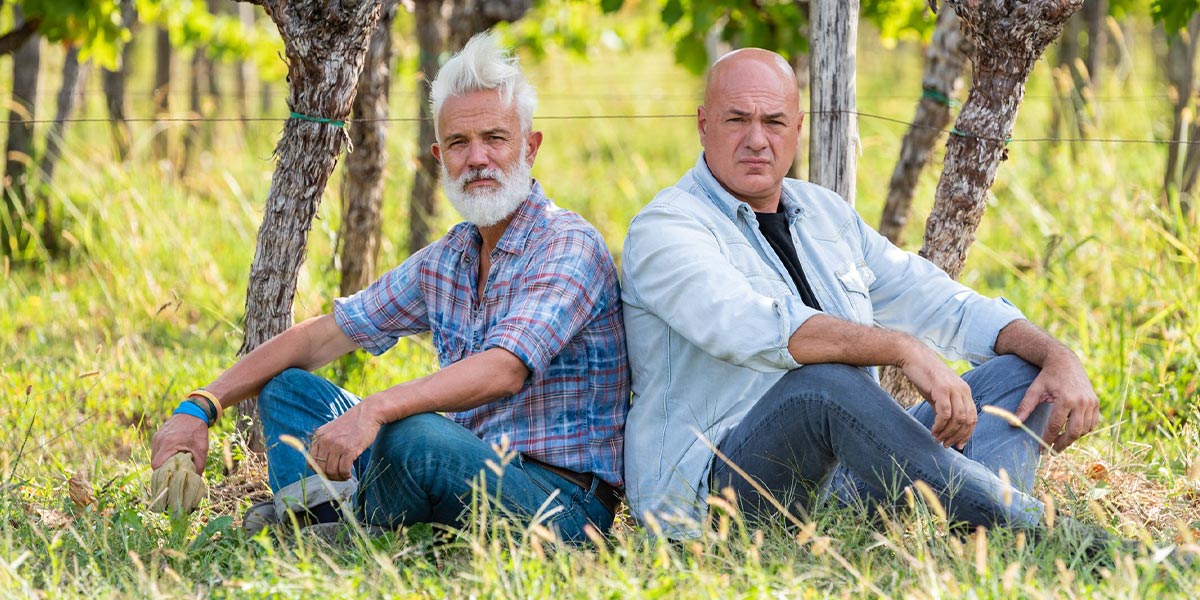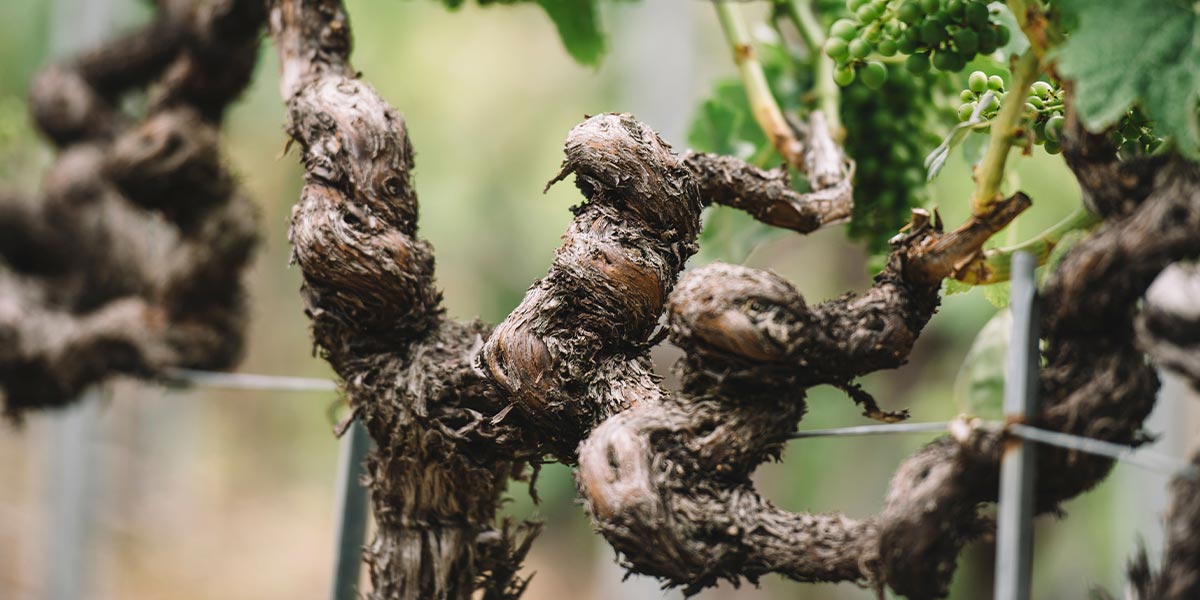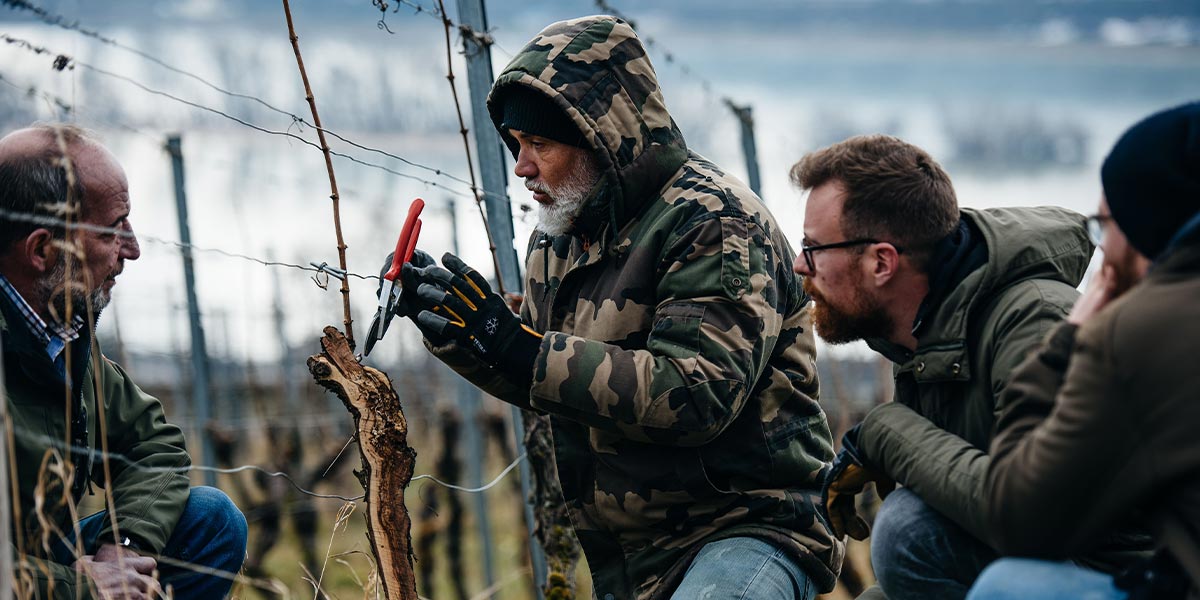Much attention has been paid in recent years to the various management factors that influence wine quality: Soil cultivation, water and nutrient supply to the vine, foliage management, yield control. The question of how to prune vines properly, on the other hand, has hardly been addressed. Yet pruning not only determines the quantity and quality of the grapes. It also facilitates all subsequent work in the vineyard. At least as important is the fundamental influence of pruning on the health of the vine, on its resistance and longevity: poor pruning shortens the age of the vines, while well-considered pruning can prolong it.
The rotation periods in modern vineyards have drastically decreased and are now 20 to 30 years. The knowledge that old vines make better wine thus becomes almost worthless.
 |
Italian Marco Simonit is passionate about this subject. Together with his friend Pierpaolo Sirch, he began to develop a method in Friuli some 30 years ago that winemakers all over the world now rely on: gentle pruning or pruning with little wound. In the meantime, their team of advisors looks after winegrowers from all over Italy as well as famous wineries from Bordeaux, Burgundy and Champagne. They are joined by wineries from other European countries and overseas. Interest has also been growing in Austria and Germany for years.
The technique, named after the two agronomists, is based on the observation that cuts into perennial wood cause cone-shaped drying in the plant tissue and interrupt sap pathways running there. The larger the cut wounds, the deeper and more consequential these drying cones are. Although the vines do not show any outward signs at first, large-scale necroses develop inside them. They are the reason why seemingly healthy vines suddenly collapse in summer. Their dysfunctional conduction system can no longer cope with heat and drought stress. The result: leaves and grapes wither and die within a few days.
 |
Simonit & Sirch's method is designed to maintain an efficient, juice-bearing leader system. This is achieved by making the smallest possible pruning cuts with the help of targeted cuts in only one to two-year-old wood. A sufficiently left overhang prevents the desiccations from penetrating into the sap-bearing tissue.
Newly cut shoots are always located at the base of the previous year's cone, and thus have a connection to already developed sap paths. Through constant, controlled wood growth, a branch-like continuation of the vine trunk is thus created over the years.
"With our method, the vines reach a higher age, they are more resistant to seasonal stress and climate change ", Marco Simonit explains, adding that this requires not only a well-developed root system, "but also a well-developed wood structure, a trunk and crown with branches, similar to a tree." This continuous growth of old wood respects the natural growth needs of the vine. In the case of Guyot training, this branch growth (ramification) is horizontal. The vine is not built up, as is the case with conventional pruning. This also eliminates the periodic - and life-shortening - pruning by heading the vine as soon as it has moved too far away from the bending wire.
In the narrow grid dictated by wire frames and high planting density, the vine has very little space available. "Worldwide, viticulture suffers from this dilemma. But German winegrowers have to struggle with it a bit more," Marco Simonit jokes. Their striving for exactness makes it particularly difficult for them to abandon the rigid, geometric concept of positioning the vine in the trellis. However, it must be able to use the available space in an expansive manner. "We have to allow the vine to change its shape in the course of development," Simonit explains. That sounds complicated and labour-intensive at first. Mathias Scheidweiler from the Institute for General and Organic Viticulture at the Geisenheim University of Applied Sciences, however, refutes the fears of winegrowers that the amount of work involved in soft pruning is much greater: "In the conversion phase, the pruning method is more labour-intensive and time-consuming. However, the amount of work involved is relatively quickly brought into line with what is usual in conventional systems.".
Unlike other woody plants, grapevines are not able to close larger wounds by callus formation, especially when cutting into old wood. However, especially large open pruning wounds are entry points for wood-destroying fungi. Gentle pruning causes only small wounds and is therefore suitable for reducing susceptibility to wood diseases.
 |
Peter Rudloff, vineyard master of the Juliusspital in Würzburg, was one of the first advocates of the method in Germany: "We always had bigger problems with irregular budding and wood diseases," he describes the reasons for cooperating with the consultants in 2013. Rudloff emphatically confirms the correctness of the decision at that time: "Our employees have regained a feeling for the vines. We no longer prune according to a pattern, but treat each plant individually. The vines have become more vital and efficient, there are fewer vine failures and we have Esca better under control. In addition, despite climate fluctuations and drought, the yields have not declined significantly, but have remained the same. So the method is also worthwhile from a business point of view. I can recommend it to everyone."
German teaching and research institutes have also taken up the subject in scientific papers. At Geisenheim University of Applied Sciences, the institute's own vineyards have been gradually converted to the new pruning system since the staff had Simonit & Sirch train them in 2017/2018. Students can learn the basics of winter pruning and targeted pruning in spring in a five-day course. For the past two years, the Geisenheim Institute for Continuing Education has also offered a course for external students.
Larger wineries usually engage Simonit & Sirch over a period of several years. First, the winery's own staff is intensively trained, then the team's knowledge is refreshed before each pruning season. Winegrowers who only cultivate a few hectares and do not want to hire consultants can acquire pruning knowledge in various seminars. The Italian language is no longer a prerequisite: Simonit and Sirch now offer courses in English and partly online.
Jobst von Volckamer works as a freelance journalist. He was editor of the trade magazine MERUM for 15 years, owned a vineyard in Tuscany for a long time and was trained in "gentle pruning" by Simonit & Sirch.